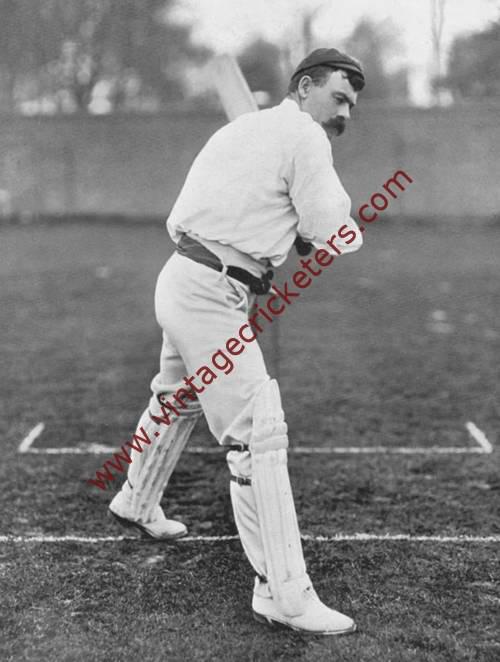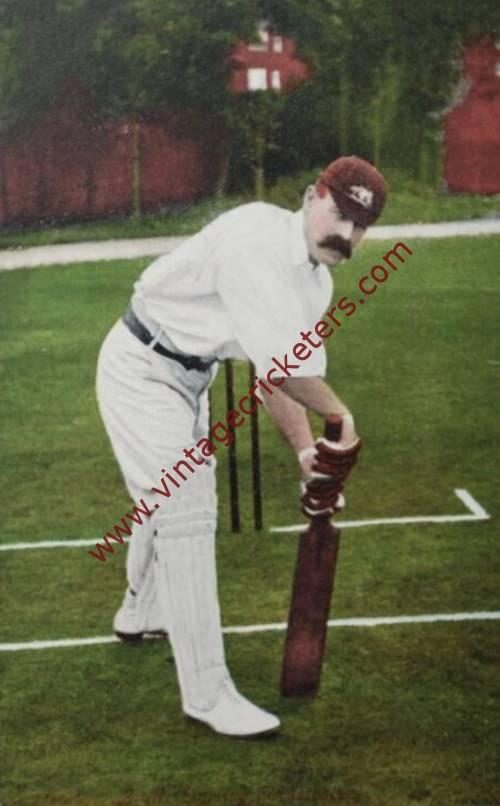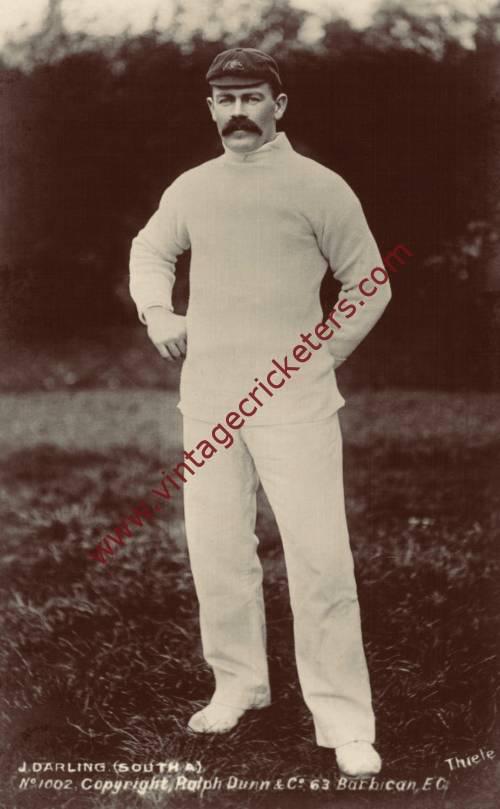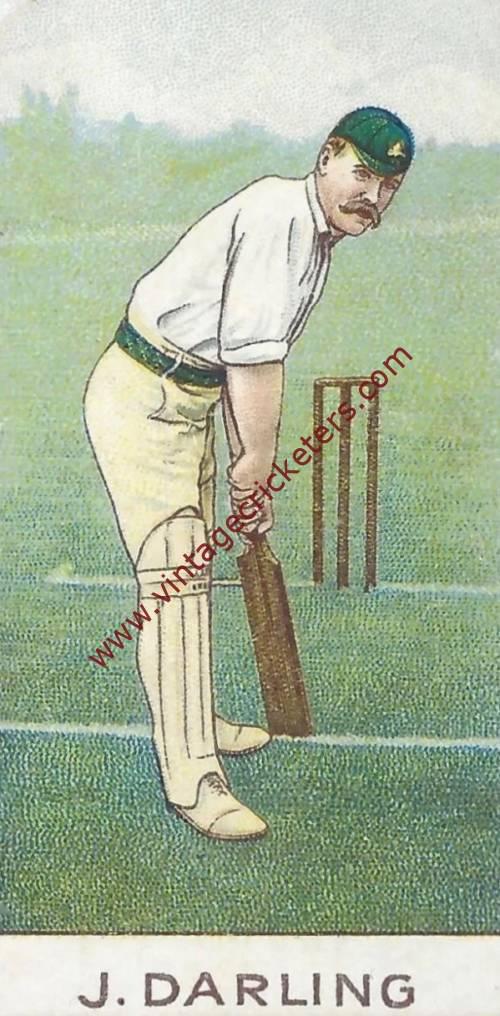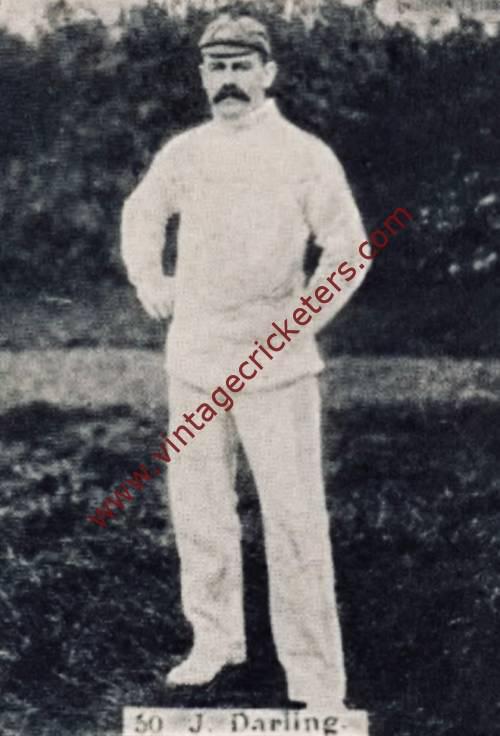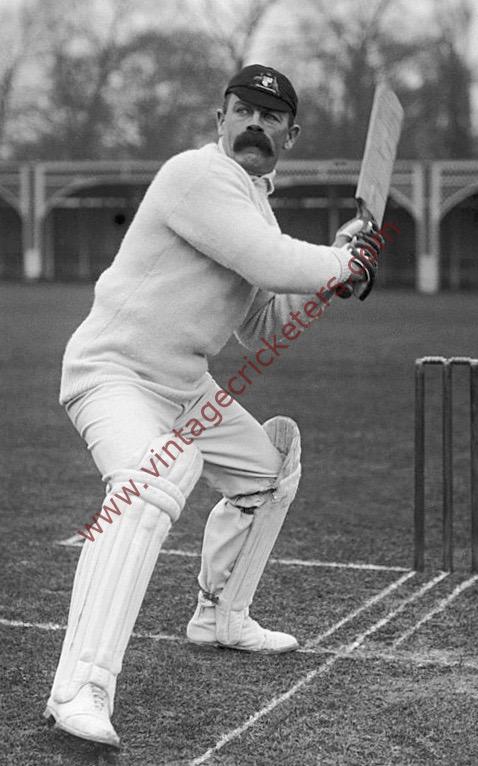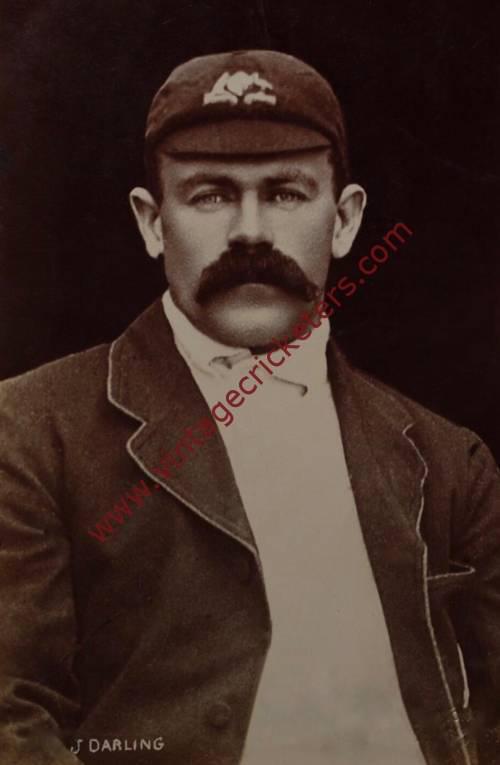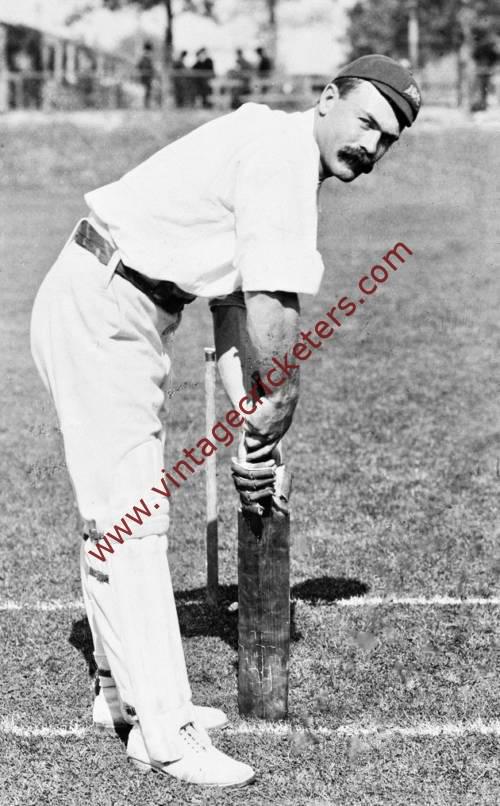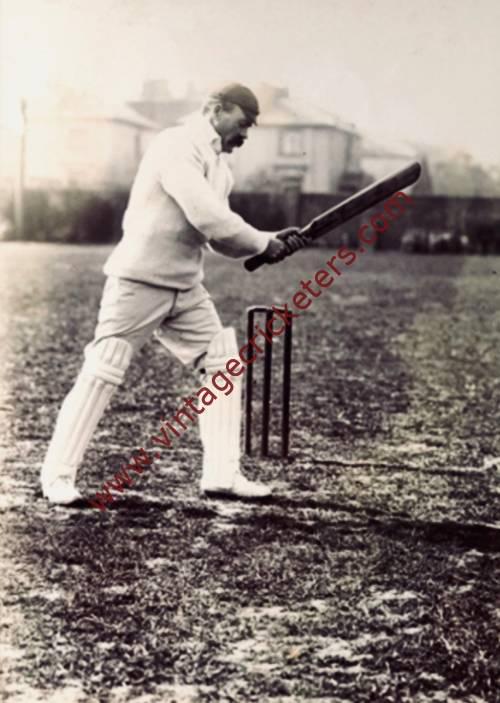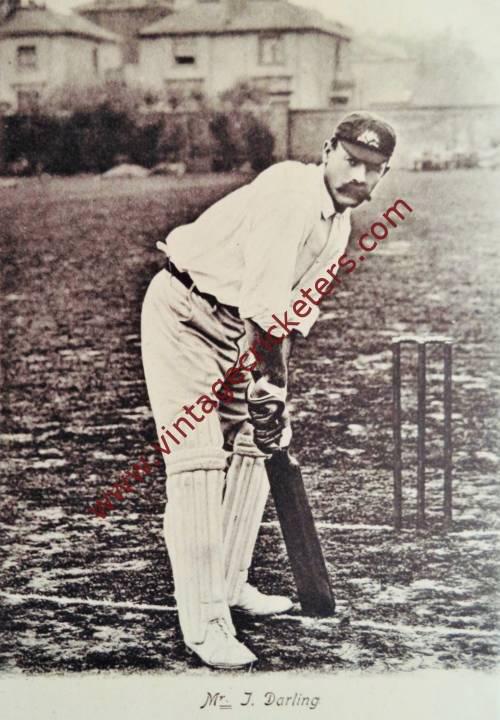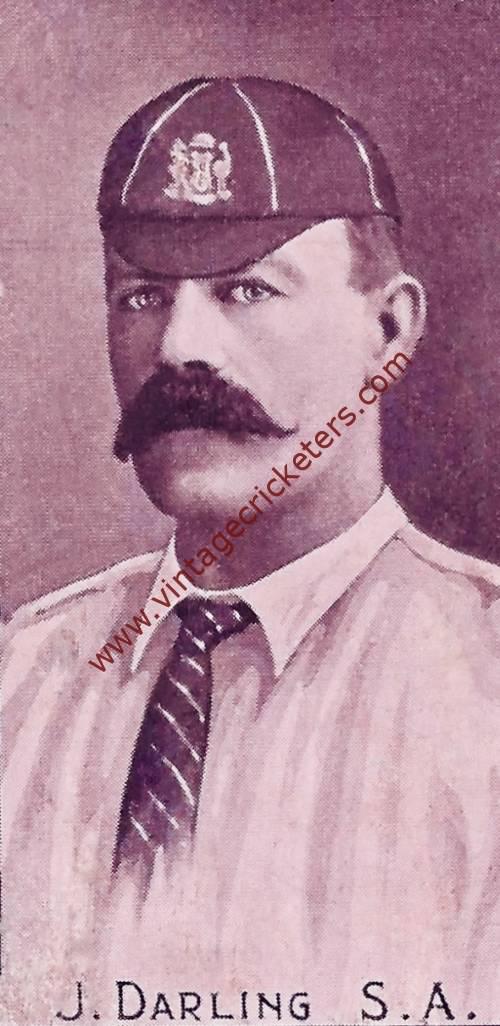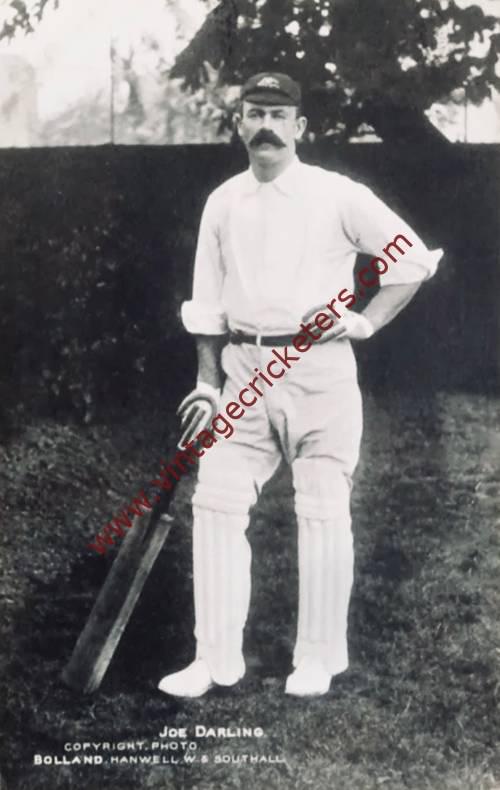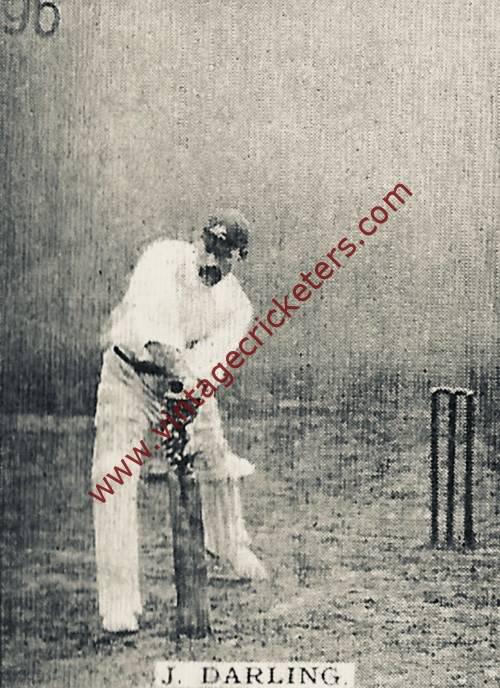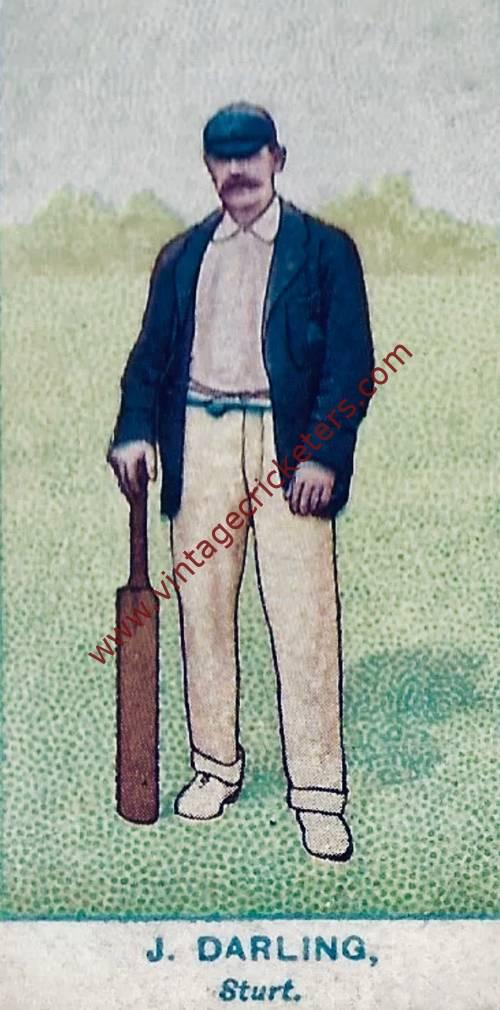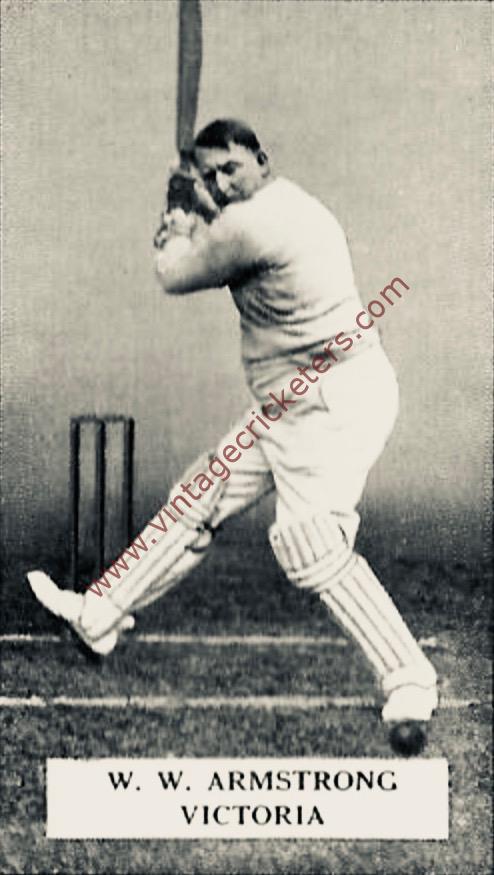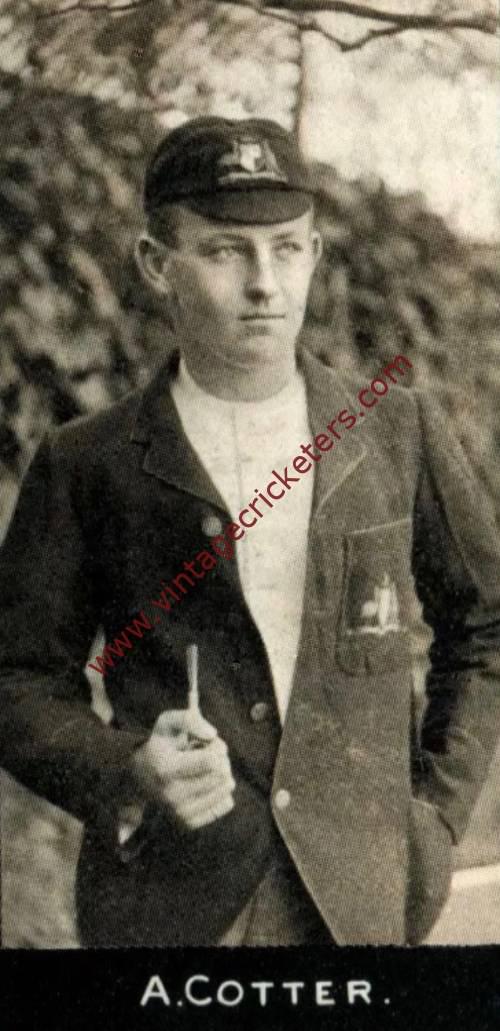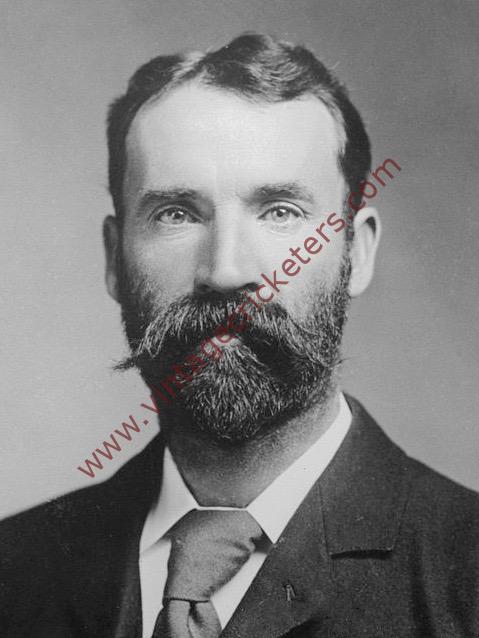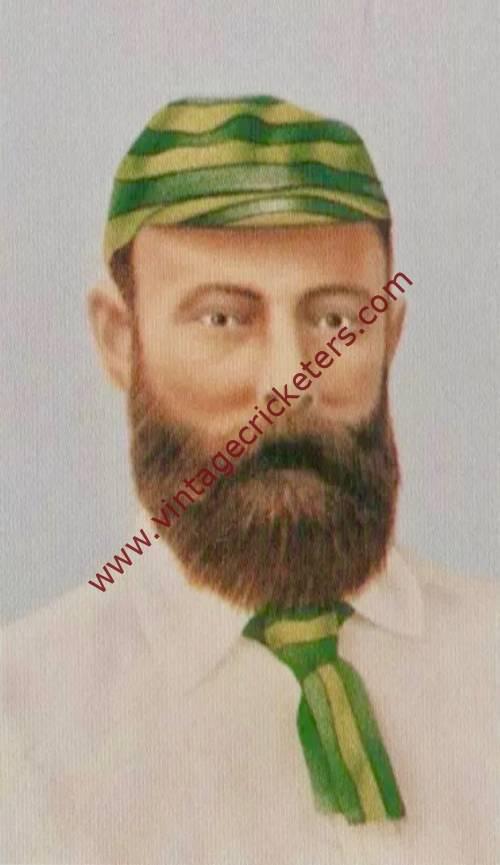Please choose your photo size from the drop down menu below.
If you wish your photo to be framed please select Yes.
Note: 16″x 20″not available in a frame.
Images can also be added to accessories. To order please follow these links
£8.95 – £49.95
Please choose your photo size from the drop down menu below.
If you wish your photo to be framed please select Yes.
Note: 16″x 20″not available in a frame.
Images can also be added to accessories. To order please follow these links
The maximum number of views of this element is reached.
Please contact the webmaster to enable unlimited views.
Glen Osmond, South Australia born left-hand batsman Joe Darling was educated at Prince Alfred College, where he took an interest in cricket. At the age of 15, he scored a record 252 runs in the “inter-collegiate” match, the annual fixture against fierce rival St Peter’s College. His future Test team mate, Clem Hill, would later beat this record, scoring 360. Not long after, he was included in a combined South Australian/Victoria XV that played the Australian XI in 1886. He made only 16 runs, but the manner in which he made them saw senior players hail him as a future champion. He was selected for the South Australian team at age 19, but his father would not allow him time off from the family farm to play.
The left-handed Darling was a strong driver of the ball who showed the batsman the full face of the bat. When necessary, he was a dour defender of his wicket. His fellow players thought that was sometimes unnecessarily defensive in his approach to batting and that he was at his best when driving hard.
Two years later Darling returned to Adelaide and to cricket. He was soon selected to represent South Australia in inter-colonial cricket. He made his first class cricket debut against New South Wales at the Adelaide Oval in December 1893, scoring 5 and 32 as South Australia won the match by 237 runs. The next season, against the touring England team captained by Andrew Stoddart, Darling made 115, his maiden first class century.
The First Test of 1894-95 against England, at the Sydney Cricket Ground in December 1894 saw Darling make his Test debut. In an innings where Australia make 586 runs, including centuries for George Giffen and Syd Gregory, Darling was dismissed for a golden duck, bowled first ball by Tom Richardson. He played in all five Tests in the series, scoring 258 runs at an averageof 28.66 per innings. He was included in the Australian team to tour England in 1896, where he topped the scoring aggregates for the tour with 1,555 runs at an average of 29.90, including three centuries. Wisden Cricketers’ Almanack stated that Darling “proved himself perhaps the best of present day left-handed batsmen” during the tour. England won the series two Tests to one.
Andrew Stoddart brought another team to Australia to contest The Ashes in 1897-98. Australia won the series comfortably, four Tests to one. Darling started the season poorly, scoring a duck and one against the tourists for South Australia in a match in which team mate Clem Hill scored a double century. Darling went on, however, to dominate the series with the bat. His maiden Test century, 101 in the First Test at the Sydney Cricket Ground after Australia was made to follow on, was the first made by a left-hander in Tests. It was not enough to prevent England winning by nine wickets.
In the Third Test in his home town of Adelaide, Darling scored 178 runs and Australia won the match by an innings and 13 runs. He reached his century by hitting Johnny Briggs over the eastern gate and into the nearby park. This is the only time in Ashes Tests where a player has reached 100 with a hit out of the ground. During this innings, he also became the first player to hit a six in a Test in Australia (prior to 1910, a six was awarded only if the ball was hit out of the ground). He later also hit the first six in a Test in England. Returning to Sydney for the Fifth and final Test, Darling scored 160 runs from 253 scored in total. He batted for 165 minutes, hitting 30 boundaries as Australia successfully chased 273 in the fourth innings. His first 100 came in 91 minutes; at the time, the fastest Test century scored. By the end of the season, Darling became the first player to score 500 runs in a series and the first player to score three centuries in a series.
Darling was chosen by his team mates as captain for the 1899 Australian team touring England. The team was one of the strongest seen in England to that time, with the cricket reference book Wisden stating, “By common consent the [1899 Australians] formed the strongest combination that had come from the Colonies since the great side captained by Mr. W. L. Murdoch in 1882.” and that “Darling proved himself one of the very best captains that ever took a team into the field.” The Australians lost only three of the 35 matches they played on the tour, winning 16 and another 16 finishing in draws. The only Test to reach a decisive result was the Second Test at Lord’s, where Australia won by ten wickets due in part to centuries by Hill and Victor Trumper and a ten wicket haul by fast bowler Ernie Jones. Aside from Hill, Darling was seen by Wisden as the best batsman among the Australians. Wisden claimed, “Up to a certain point the responsibilities of captaincy seemed to tell against Darling, but during the last weeks of the tour he played marvellous cricket.” Over the tour, he scored 1,941 runs at an average of 41.29, topping both the averages and the aggregate for his team, and was named as one of the Wisden Cricketers of the Year.
Darling’s deeds as a cricketer had reconciled his father to his sporting endeavours, but not to his sports store operation in Adelaide. In 1900, his father purchased “Stonehenge”, a sheep station covering 10,000 acres (4,000 ha) in central Tasmania and ordered Darling to run the property on pain of exclusion from his will. Darling complied with his father’s wishes and moved his family to the remote station, 34 kilometres (21 mi) along a dirt track from the nearest town, tiny Oatlands. Darling stood out of first class cricket for nearly two years.
It was not until December 1901 that Darling was convinced to return by the Melbourne Cricket Club to captain the Australians against the touring English for the first three Tests only. The English, captained by Archie MacLaren, won the First Test in Sydney convincingly by an innings and 124 runs.
The Second Test in Melbourne was played on a rain-affected pitch. MacLaren won the toss and sent Australia in to bat on the “sticky wicket”. Within three hours, both teams had been dismissed; Australia holding a lead on the first innings of 51 runs. Realising the danger the pitch held to his leading batsmen, Darling re-ordered the batting line-up and opened the batting himself alongside Hugh Trumble. The pair held out the English for 90 minutes; Darling considered his 32 runs one of his best innings. Nevertheless, Barnes managed to grab five wickets in the final half-hour to leave the Australians at 48-5 when stumps was called. Twenty five wickets fell in the day’s play. Importantly, Australia had a 99 run lead and batsmen of the calibre of Hill, Trumper, Reggie Duff and Warwick Armstrong still to bat. The next day, on a perfect pitch, the Australian batsmen established a match-winning lead, eventually winning the Test by 229 runs
In the Third Test in Adelaide, Australia became the first team to score over 300 runs to win the fourth innings of a Test match. Darling, along with Hill and Trumble, led the record making run chase; Darling scored 62 runs. Hugh Trumble captained the final two Tests as Darling returned to his farm. Australia won both Tests and the series to retain The Ashes.
Darling agreed to once again lead the Australian cricket team in England in 1902. In what was a very cold and wet summer, the Australian team won a close fought series against the strong English team two Tests to one. Given the strength of the opposition, this Australian team is often referred to as one of the best Australian teams ever assembled. The team included players of the calibre of Trumper, Hill, Armstrong, Trumble and Monty Noble; all of whom would be later included in the Australian Cricket Hall of Fame. The team lost only two matches during the tour, with Wisden saying, “No travelling team ever strove harder for victory or more completely subordinated all personal considerations to the prime object of winning matches. They formed a splendid all-round combination”.
The First Test at Edgbaston finished in a draw. Rain saved the Australians after they were dismissed for only 36 in their first innings; Wilfred Rhodes took seven wickets for only 17 runs. Rain again ruined the Second Test at Lord’s when the final two days were washed out. The Third Test, the only Test match played at Bramall Lane, saw Australia win by 143 runs due in part to a century by Hill and Noble taking 5-51. Darling was dismissed twice by Barnes without scoring, the first Test captain to make a “pair”.
Australia won the Fourth Test at Old Trafford by three runs; Trumble took ten wickets for the match. The last batsman, Fred Tate, came in with England needing eight runs to secure victory. Darling brought the field in and Trumble prevented Rhodes scoring from the last three balls of his over. This left Tate to face Jack Saunders, who dismissed him with the fourth ball of his over to win the match for Australia. England won the Fifth and final Test at the Oval by one wicket. Chasing 263, England were 48-5 when Gilbert Jessop scored a century in 75 minutes to help England to victory.
The star for the Australians was Trumper who scored 2,570 runs, easily beating Darling’s own record for a colonial batsman in an English season set in 1899. So important was Trumper to the Australian team that Darling, who had previously checked that all the Australians were on board the carriage to the ground, was later simply to ask “Is Vic aboard?” before giving the driver the go-ahead. Darling himself had a mixed tour with the bat.
The Wisden Cricketers’ Almanack stated: “Darling started the tour in a way that promised great things, but he did not keep up his form and fell a good deal below his standard of 1896 and 1899. His tremendous hitting power, however, was several times of the utmost value, and very likely in a season of hard wickets he would have had as good a record as ever.”
On the return trip to Australia, the touring team stopped to play three Tests against South Africa, the first between the two nations. Australia won the series two Tests to nil, but Darling’s own form was poor. In successive innings, Darling made 0, 14, 6, 4 and 1. After the tour, he returned to Stonehenge and took a two year break from first class cricket. In his absence, Monty Noble captained the Australian team against the touring English in 1903-04.
Before the Australian team to tour England in 1905 was selected, Darling returned to first class cricket playing for South Australia. He won selection in the touring squad and was named as captain. A weaker Australian bowling attack saw Darling resort to defensive measures throughout the tour. These measures included directing Armstrong to bowl his leg breaks down the leg side, where Darling had placed up to seven fielders. These measures, unpopular with the English public, saw 19 matches on the tour finish in draws, three more than the 16 matches won by Australia. Wisden said, “Leaving aside Duff’s long score at the Oval, Darling was the finest batsman on the side in the Test games, playing superb cricket under very trying conditions.” At Old Trafford in the Fourth Test, he made 73 out of 105 in less than ninety minutes. His innings included 13 boundaries, all but one of them being drives. Despite his efforts, England still won the Test by an innings and 80 runs.
After losing six tosses against his English opposite number Stanley Jackson during the summer, Darling decided on a different approach before the Scarborough Festival match late in the tour. At the toss, he approached Jackson stripped to the waist and suggested, in fun, a wrestle for choice of innings.
The 1905 tour was Darling’s last Test cricket foray, as he claimed that continuing to tour was unfair to his wife. He retired from first class cricket during the 1907-08 season. In his first class career, Darling made 10,635 runs, including 19 centuries at an average of 34.52. In club cricket in Adelaide, he scored heavily. He averaged 144 for East Torrens Cricket Club in 1899-1900, 98.66 for Adelaide Cricket Club in 1896-97 and 86.20 for Sturt Cricket Club in 1904-05. He continued to make runs in Tasmanian club cricket right through middle age. In 1921, he made 100 runs in an hour, including 29 in one eight-ball over playing for Claremont Cricket Club. At age 52, he made 133 not out during a successful run chase where his team, Break-o’-Day, made 219-6 in 90 minutes.
He was contemptuous of the newly formed Australian Board of Control for International Cricket Matches (now known as Cricket Australia), who he saw as attempting to remove control of international cricket tours from the players. He would often refer to cricket administrators as “Dead Heads”. He later represented the Tasmanian Cricket Association as a delegate to the Board of Control.
Darling holds the record for the most innings in a complete Test Match career (60), without being dismissed lbw. As captain, he led Australia in a total of 21 Tests, winning seven and losing four. In 34 Test matches for Australia, he scored 1,657 runs at a 28.56 average, with 3 centuries and 8 half centuries, and a highest score of 178. In his first class career of 202 matches, he scored 10,635 at an average of 34.52, with 19 centuries and 55 half centuries. He also took 148 catches, 27 in Test matches.
| Weight | N/A |
|---|
